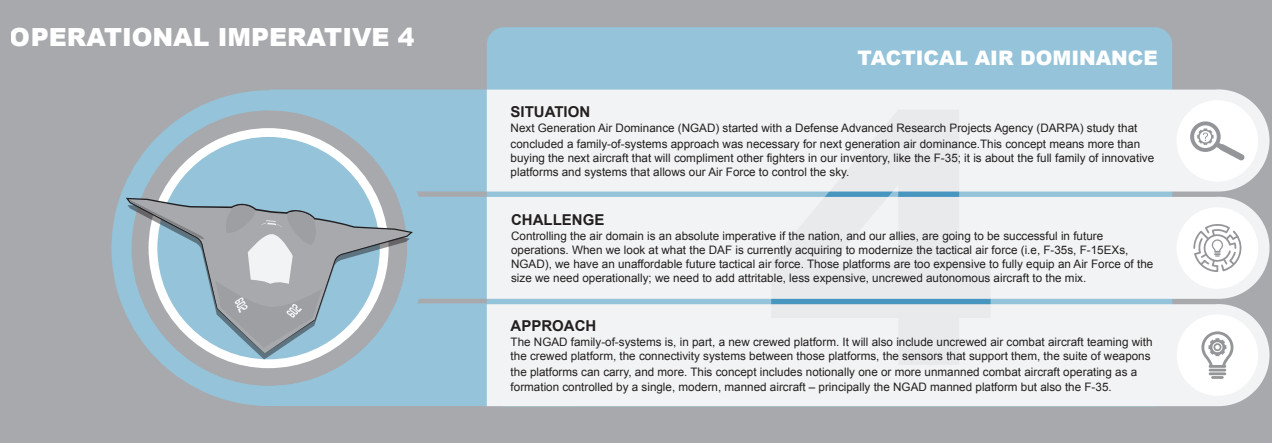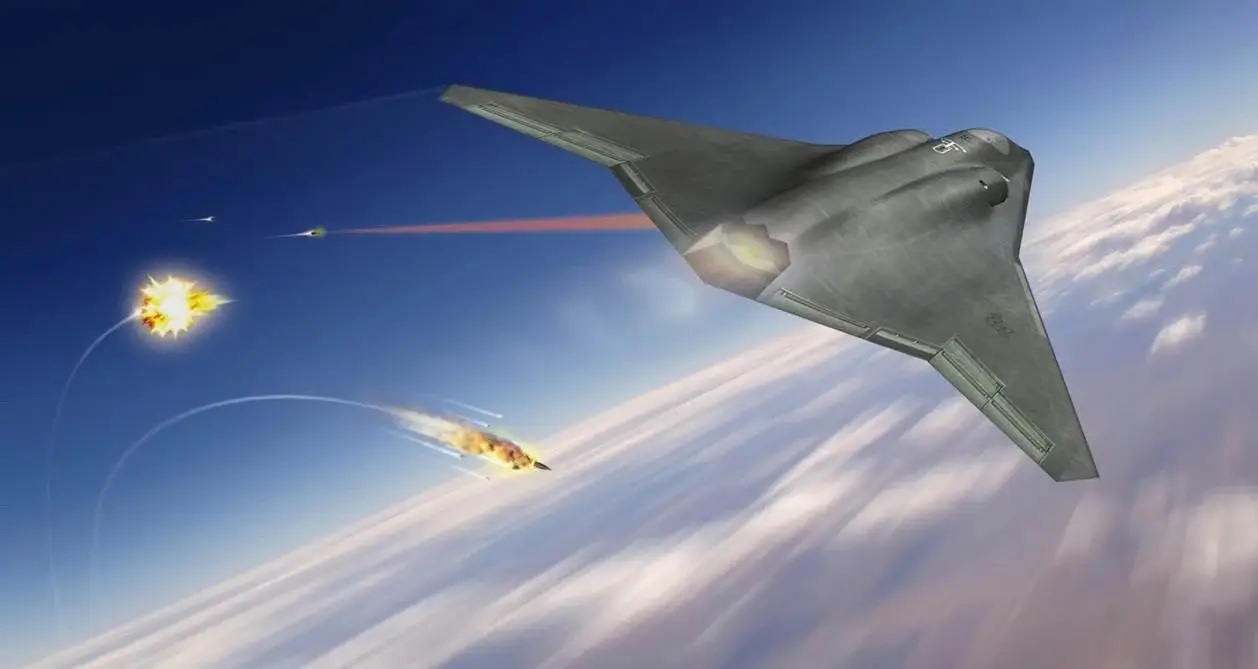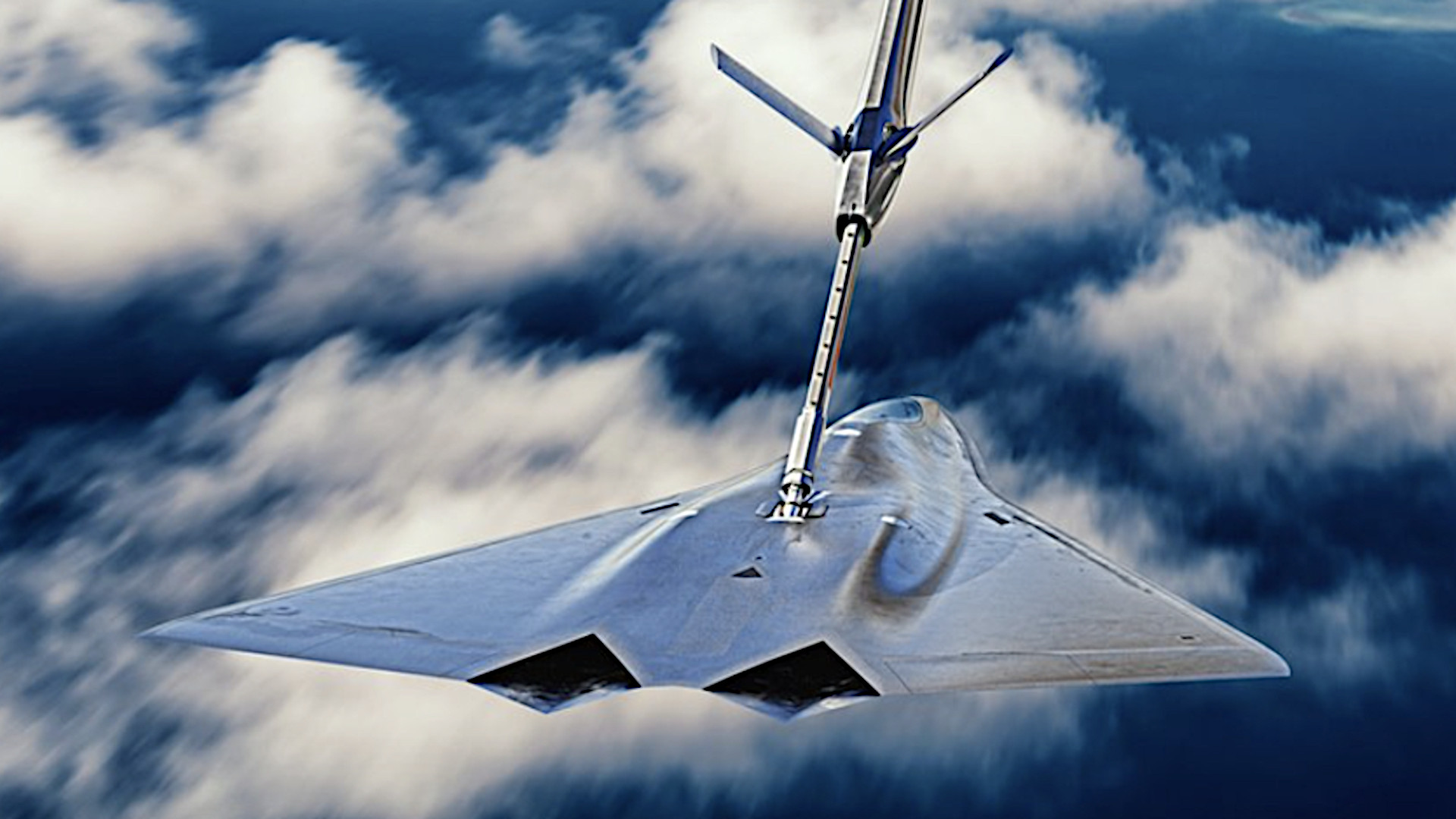The U.S. Air Force has released a classified contract solicitation for the engineering and manufacturing phase of the development of a new stealth six-generation crewed tactical jet. The effort is part of the service’s larger Next Generation Air Dominance modernization initiative, or NGAD. The future NGAD combat jet is expected to be a direct successor to the F-22 Raptor stealth fighter, but serve in a much more expansive role than its predecessor.
Competition to win this contract will be immensely heated as it could very well be the last advanced manned tactical fighter-like aircraft built for the United States Air Force.
The Air Force announced the solicitation in a press release today. Secretary of the Air Force Frank Kendall had said the NGAD combat jet was entering its engineering and manufacturing development (EMD) phase last June. Kendall’s comments were followed by the announcement of an Inspector General investigation into the maturity of the NGAD combat jet program. He clarified last September that it had not formally reached that milestone. At least one demonstrator design has already been flying for years now and Kendall has said in the past that this program has leveraged advanced experimental design work dating back at least to 2015.

“The NGAD Platform is a vital element of the Air Dominance family of systems which represents a generational leap in technology over the F-22, which it will replace,” Secretary of the Air Force Frank Kendall said in a statement accompanying the press release. “NGAD will include attributes such as enhanced lethality and the ability to survive, persist, interoperate, and adapt in the air domain, all within highly contested operational environments. No one does this better than the U.S. Air Force, but we will lose that edge if we don’t move forward now.”
Details about exactly what the Air Force is looking for in this aircraft remain limited. Who may be expected to submit proposals is unknown, though the general expectation is that Lockheed Martin, Northrop Grumman, and Boeing will be at the center of the forthcoming competition.

“This solicitation release formally begins the source selection process providing industry with the requirements the DAF expects for NGAD, as the future replacement of the F-22,” according to today’s press release. “Further information on the NGAD Platform’s technical and programmatic details are classified to protect operational and technological advantages.”
“The NGAD acquisition strategy will invigorate and broaden the industrial base to deliver rapid and innovative warfighting capabilities,” it adds. “The strategy incorporates lessons learned from recent Air Force acquisition programs and will leverage open architecture standards. This approach will enable the government to maximize competition throughout the life cycle, provide a larger, more responsive industry base and drastically reduce maintenance and sustainment costs.”
Secretary Kendall has said in the past that he expects the NGAD combat jets to be very exquisite platforms that will cost “multiple hundreds of millions of dollars” apiece. Broadband stealth, advanced electronic and other “spectral” warfare capabilities – which you can read more bout in detail here – and significant range and payload capabilities are all likely to be central components of the design. The broader NGAD initiative also contains programs focused on the development of advanced drones with high degrees of autonomy, as well as new jet engines, weapons, electronic warfare suites, sensors, battle management capabilities, and other systems.

The expectation has also already long been that these aircraft would supplant the Air Force’s F-22s and take on their roles, including acting as stealthy “quarterbacks” for managing major air operations in highly contested areas. That the NGAD combat jet will play this latter role was reinforced last year when Secretary Kendall announced that the Air Force was planning around a purchase of 200 NGAD aircraft, as well as at least 1,000 drones called Collaborative Combat Aircraft (CCA). The initial 1,000 drone figure was based around a concept of operation wherein two of them would be paired with each of the 200 NGAD jets, as well as 300 stealthy F-35A Joint Strike Fighters. The CCA program is another part of NGAD.

From a contracting perspective, there are clear indications that the Air Force is looking to avoid making the same kinds of mistakes it has made with other high-profile aircraft acquisition programs in the past, especially the F-35A. Kendall has publicly spoken about his interest in being able to secure more data rights in order to be less beholden to the original equipment manufacturer for follow-on upgrade and sustainment deals.
That, together with the relatively low expected production volume and high unit for the NGAD combat jet, could lead to intense competition for the EMD deal, but then greater focus on the part of winning and losing contractors afterward on various other NGAD projects — especially the CCA program. While the Air Force is planning right now around acquiring at least 1,000 CCAs all of one type, Secretary Kendall has left the door open there for purchases of hundreds, if not thousands more of drones of multiple types to meet the services needs in this regard. The final number of manned NGAD airframes is likely to fluctuate as well as the program progresses.
Multiple contractors, small and large, will have to collaborate on the final NGAD design, no matter what company is chosen to lead the development.

The Air Force hopes to award the NGAD Platform EMD phase contract sometime next year. The service officials have said in the past that the hope is that actual NGAD combat jets will begin entering operational service before the end of the decade. This ambitious schedule further points to significant research and development work having already been done.
In its 2024 Fiscal Year budget request, the Air Force is asking for $276 million to help with risk reduction work on the crewed NGAD combat jet. This is part of the $1.93 billion in NGAD funding the Air Force is looking to receive in the next fiscal cycle. This notably does not include some elements of the broader initiative, including separate funding streams for CCA and the Next Generation Adaptive Propulsion (NGAP) engine program.
How the NGAD platform EMD contract award impacts the U.S. Navy’s separate work on an advanced sixth-generation combat jet on its own NGAD program is an open question. The two services have distinct requirements for their next-generation tactical aircraft, but they are both working closely together on various aspects of their programs. For instance, both NGAD platforms will be able to control each other’s CCAs via a common communications architecture. Deep cooperation is also going on with many other facets of the programs. While the airframes may end up looking different, sub-systems, coatings and more will likely be shared, at least to some degree. The Navy has its own program in place to develop what it is referring to as F/A-XX, which looks set to expand dramatically in the next year.

All this being said, the manned NGAD platform is still expected to become the centerpiece of the Air Force’s future tactical combat jet fleets for years to come and it will also be coupled with the Long Range Strike family of systems, of which the B-21 is the centerpiece. Now the Air Force has taken the next big step toward making this aircraft a reality.
Contact the author: joe@thedrive.com
